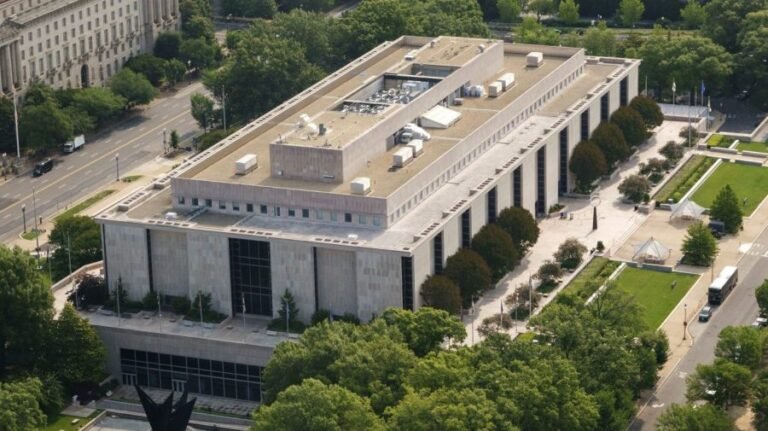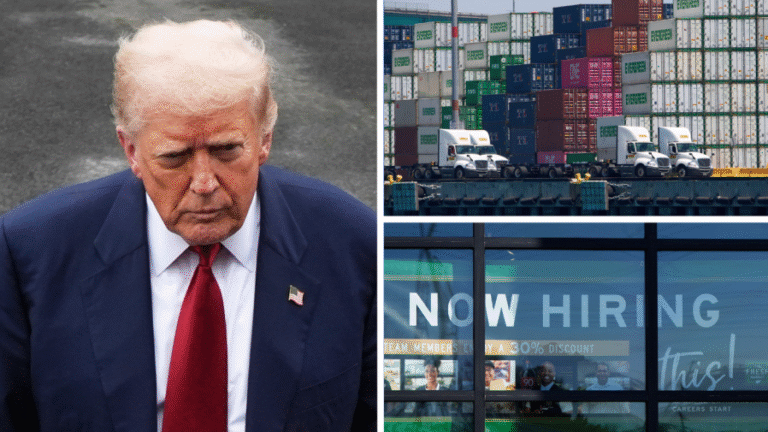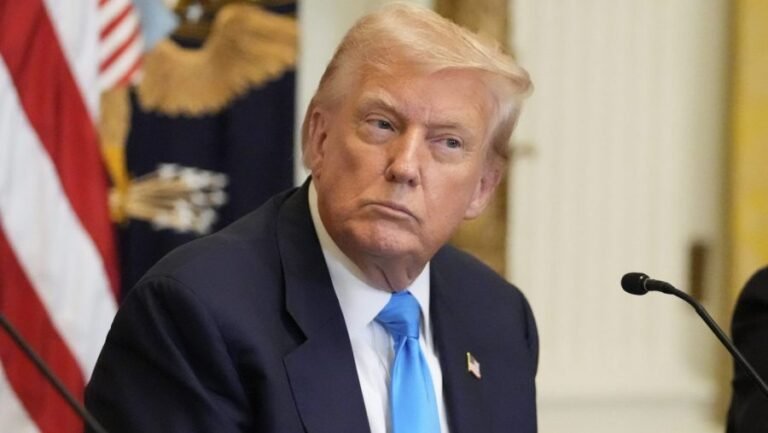
The Trump administration has struck trade pacts in recent months that seem to benefit the U.S. over its trading partners, giving President Trump ample opportunity to tout his dealmaking skills.
But Americans don’t appear to be giving him a pat on the back as the U.S. starts to feel the impact of tariffs already imposed.
Recent polls show the president’s job approval rating slipping to the lowest point of his second term and his tariff policy only satisfying about 36 percent of those surveyed, according to an Emerson College poll.
While consumer confidence is improving, there is anxiety among the public that Trump’s tariffs on goods will ultimately be passed down from company to consumer.
Consumer confidence increased from 95.2 to 97.2 in June, according to a Conference Board survey, and the expectations for consumer confidence in the future rated from 69.9 to 74.4. But the business group said consumers are still nervous about the end result of Trump’s trade battles, The Wall Street Journal reported.
Inflation also ticked up to a 2.6 percent annual increase in June from 2.3 percent in the Commerce Department’s personal consumption expenditures price index, exceeding expectations of economists for a 2.5 percent increase.
Businesses are bracing for what the threats mean and what the deals entail, while many of them have been struck within just a week of the tariffs being put into place to avoid Trump setting higher rates himself.
“They’re not genuine trade agreements of the traditional sort, which are voluntary in nature — countries negotiate, agree, sign, and then ratify,” said Douglas Holtz-Eakin, president of the center-right American Action Forum.
He added, “These are handshake agreements at the point of a gun, and I don’t see that as a particularly durable way to think about trade policy. So, we’ll see how that plays out.”
Meanwhile, an Aug. 1 deadline looms for countries to reach tariff deals with the U.S. or risk the Trump administration imposing “reciprocal tariffs.”
Trump struck trade deals with the European Union and Japan to impose a 15 percent tariff on both trading partners. He also announced a deal with South Korea on Wednesday, imposing a 15 percent tariff on goods from there as well.
For countries that don’t have deals, Trump said they would face a tariff of between 15 and 20 percent. He has also threatened a 35 percent tariff on Canada, one of many major U.S. trading partners that haven’t struck a deal yet.
The White House has eagerly touted Trump’s dealmaking spree while laughing off the dire predictions from economists, who are bracing for a much bigger hit from new import taxes.
“What we are watching is President Trump rebuilding the greatest economy in the history of the world and simultaneously proving the so-called economic experts wrong at every turn,” said White House press secretary Karoline Leavitt.
Those wins are coming as Trump’s approval rating dropped to 40 percent in the latest Economist/YouGov poll and to just more than 44 percent in the Decision Desk HQ average.
Meanwhile, Trump received a 34 percent approval rating on his handling of inflation and prices in The Economist/YouGov poll released this week. The majority of surveyed Americans also said Trump’s tariffs will increase prices, with only 7 percent of those surveyed saying they will have no effect.
“The average voter doesn’t follow trade deals, but only what things cost and what they’re paid, and these big deal announcements — though promising — have not yet impacted anyone’s day-to-day,” said Bruce Mehlman, who served as assistant secretary of Commerce for technology policy under former President George W. Bush.
Trump has stood firm on the Aug. 1 deadline, after punting it several times since he first rolled out the “reciprocal tariffs” on April 2. The tariff plan was paused a week later, following intense pressure from Wall Street and Republicans to ease the chaotic markets at the time.
“The White House is trying to declare victory on the process. But the real question is whether the policy is a good idea or not,” said Holtz-Eakin. “They will be judged on that outcome and what it does to the economy.”
The impact on prices will be seen before the end of the year, once the tariffs hit companies and they pass them along to consumers, he said.
“The two big moments are going to be school and Christmas shopping. Those are the ultimate litmus tests. And I think over the next two quarters, third and fourth quarter, we’ll see the shape of the impacts — in the next six months,” said Holtz-Eakin.
Many of Trump’s trade deals, including with the Philippines and Indonesia, include a stipulation that U.S. exports will not face tariffs, which gave Trump the sweeter side of the deal. Leavitt on Thursday said the European Union trade deal includes the same open market for American goods.
“The deal guarantees that American businesses will have unprecedented levels of access to the European Union markets to export our American-made goods,” Leavitt said.
Monica Gorman, former special assistant to President Biden for manufacturing and industrial policy, said that opening markets to American goods is encouraging, but what happens now depends on how the private sector responds.
“We’ll just need to see if business investment in the U.S. follows, and we see expansion in manufacturing and expansion in other areas that’s going to drive exports. Certainly that could be an engine of economic growth, but I think to date, we’re actually seeing businesses pulling back because of the uncertainty,” Gorman said.
The uncertainty is exacerbated by the last-minute changes from the administration — Trump announced on Thursday that Mexico’s tariffs would be punted by 90 days — and by the lack of details about each trade deal.
Trump also declared on Wednesday, after months of administration officials claiming a deal was imminent, that he would impose a 25 percent tariff on India and slap on a penalty for buying military equipment and energy from Russia amid the war in Ukraine.


